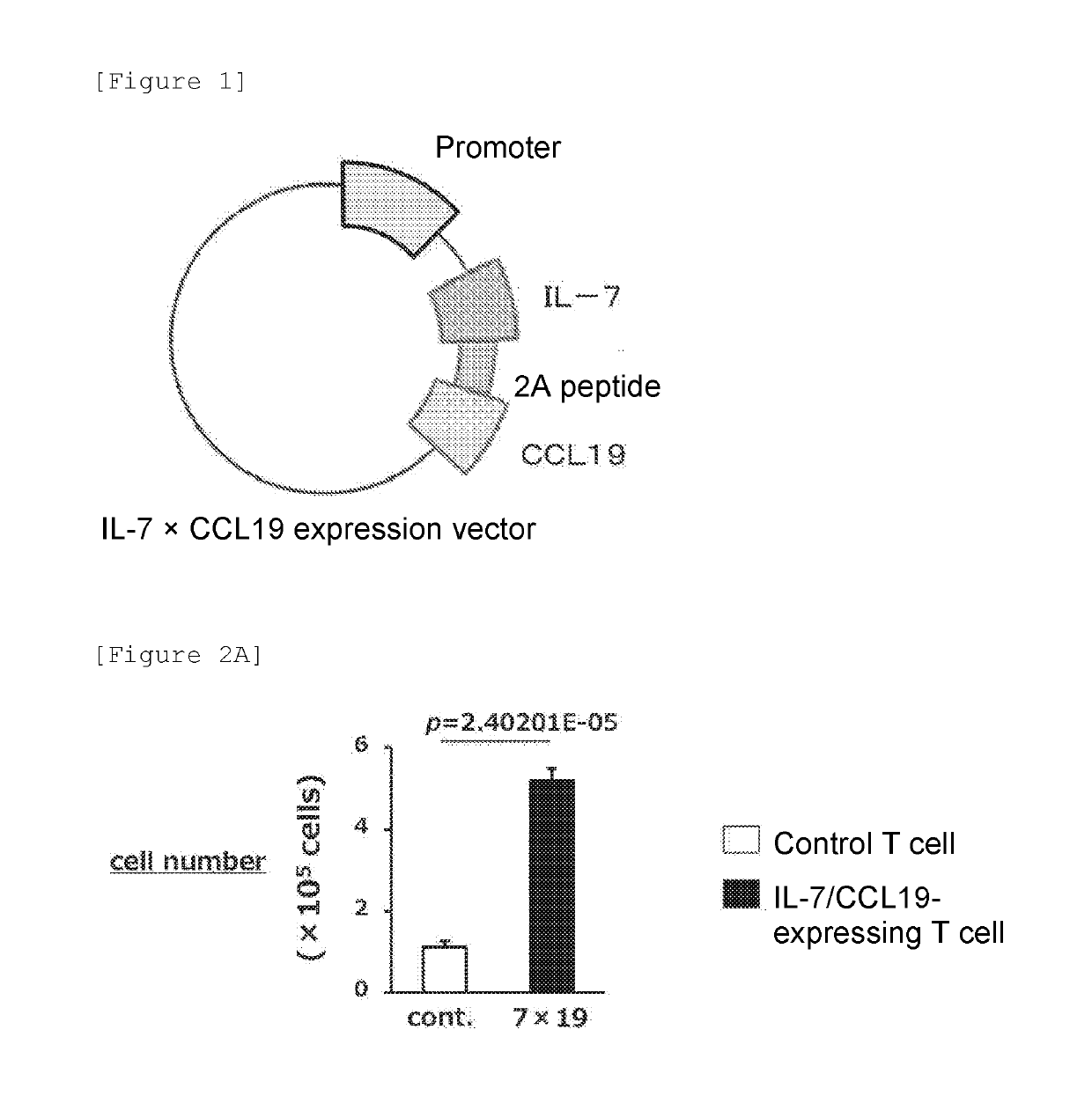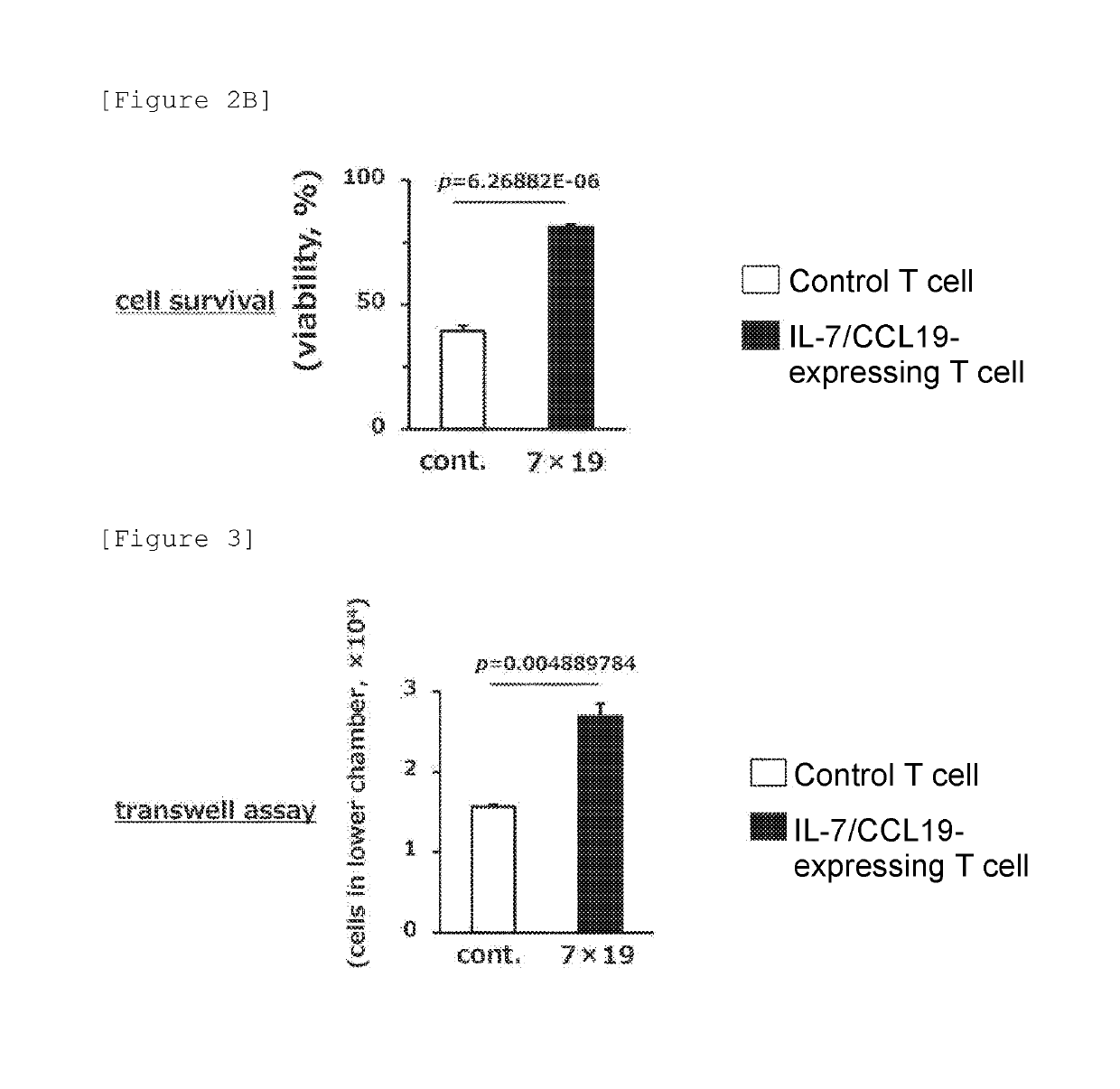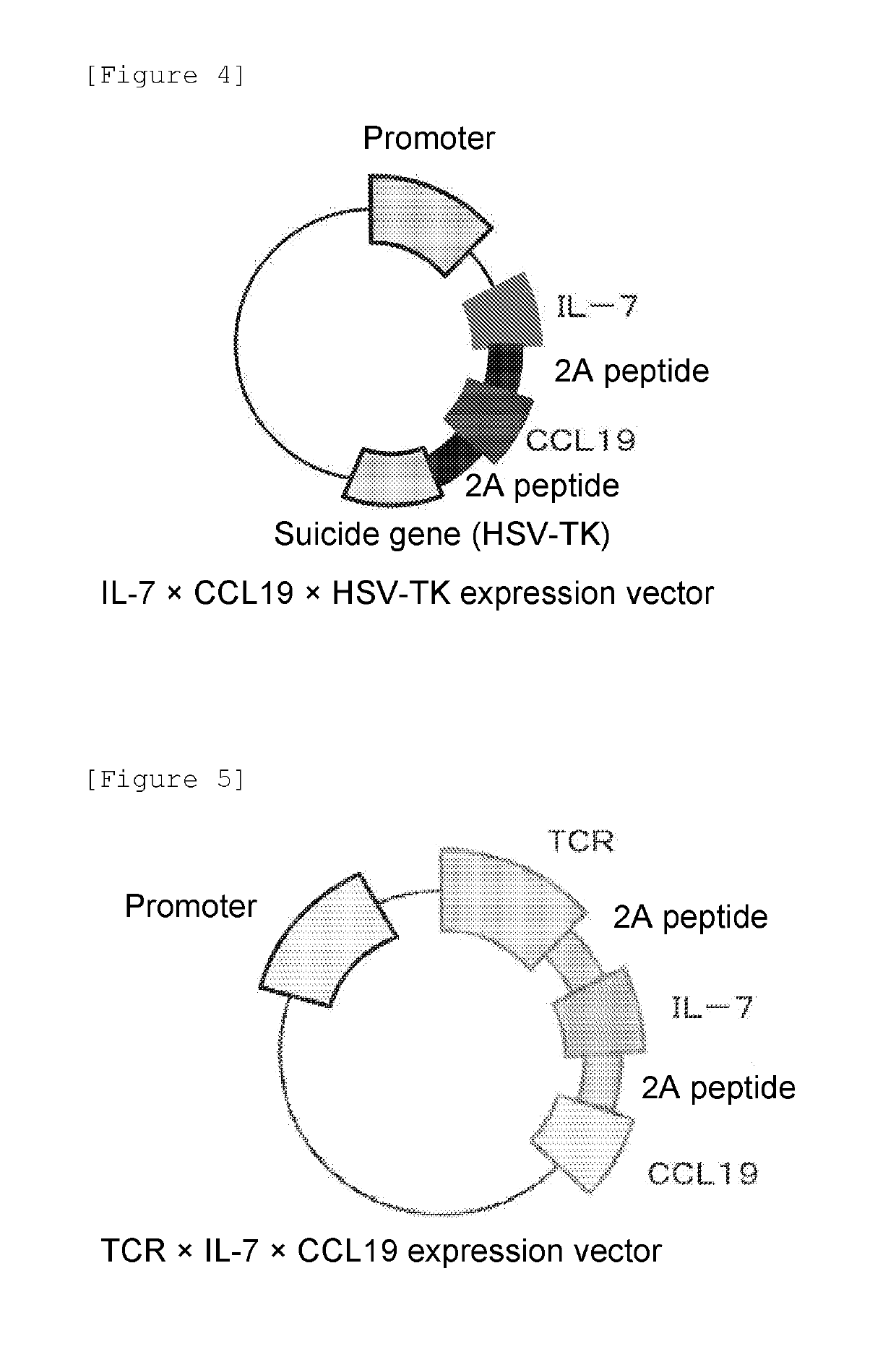Immunocompetent cell and expression vector expressing regulatory factors of immune function
a technology of immune function and immunocompetent cells, applied in the direction of immunological disorders, drug compositions, peptides, etc., can solve the problems of insufficient potentiation of immunocompetent cells used in conventional immunotherapy, and achieve the effect of suppressing the decrease in survival ra
- Summary
- Abstract
- Description
- Claims
- Application Information
AI Technical Summary
Benefits of technology
Problems solved by technology
Method used
Image
Examples
example 1
[0089](Selection of Regulatory Factors of Immune Function)
[0090]At least several hundred different types of molecules that can regulate the function of T cells are present in vivo. The inventors first selected IL-7 and CCL19 from among an enormous number of combinations on the basis of the previous findings or experiments, as regulatory molecules for further enhancing the immune function-regulating effect of immunocompetent cells, and also selected the combination of these two molecules, i.e., the combination of IL-7 and CCL19, not each alone. The inventors generated a vector for the expression of these regulatory factors of immunocompetent cell immune function.
[0091](Generation of Expression Vector for Expression of IL-7 and CCL19—1)
[0092]An anti-FITC CAR DNA fragment (SEQ ID NO: 9) encoding anti-FITC CAR consisting of anti-FITC scFv, a mouse CD8 transmembrane region, and mouse CD28-4-1BB-CD3 intracellular signal motifs, a F2A-MCS DNA fragment (SEQ ID NO: 10) encoding 2A peptide (F...
example 2
[0101](Cell Number and Viability of IL-7 / CCL19-Expressing T Cells)
[0102]Study was conducted on whether or not IL-7 or CCL19 produced by the IL-7 / CCL19-expressing T cells would exert biological function and exhibit an immunity-inducing effect. A sample containing the generated IL-7 / CCL19-expressing T cells (2) (4×103 cells) or the control T cells (2) was cultured for 5 days. The culture was performed without antigen stimulation with CD20 in order to eliminate the influence of human CD20 CAR on the expression of IL-7 and CCL19. Then, the cell number and the viability were examined using trypan blue. The results are shown in FIGS. 2A and 2B. FIG. 2A shows the cell number, and FIG. 2B shows the viability. The filled column shows the results about the IL-7 / CCL19-expressing T cells, and the open column shows the results about the control T cells.
[0103](Results)
[0104]As shown in FIGS. 2A and 2B, the cell number and the viability of the IL-7 / CCL19-expressing T cells (2) were approximately 5...
example 3
[0105][T Cell Migration Test]
[0106](T Cell Migration Test Using IL-7 / CCL19-Expressing T Cells)
[0107]The chemoattractive effect of CCL19 was studied by a cell migration test using Transwell. The migration properties of responder T cells were measured by migration through a polycarbonate filter having a pore size of 5 μm using 96-well Transwell® chambers (Costar, manufactured by Corning, Inc.). Specifically, the IL-7 / CCL19-expressing T cells (1) or the control T cells (1) were cultured in the lower chamber. The culture was performed without antigen stimulation with FITC in order to eliminate the influence of FITC CAR on the expression of IL-7 and CCL19. The responder T cells were prepared from the spleen or lymph nodes by negative selection using MACS (manufactured by Miltenyi Biotec GmbH). The responder T cells were labeled with CytoTell blue (manufactured by AAT Bioquest, Inc.) and cultured for 3 hours in the upper chamber. The migration from the upper chamber to the lower chamber w...
PUM
 Login to View More
Login to View More Abstract
Description
Claims
Application Information
 Login to View More
Login to View More - R&D
- Intellectual Property
- Life Sciences
- Materials
- Tech Scout
- Unparalleled Data Quality
- Higher Quality Content
- 60% Fewer Hallucinations
Browse by: Latest US Patents, China's latest patents, Technical Efficacy Thesaurus, Application Domain, Technology Topic, Popular Technical Reports.
© 2025 PatSnap. All rights reserved.Legal|Privacy policy|Modern Slavery Act Transparency Statement|Sitemap|About US| Contact US: help@patsnap.com



